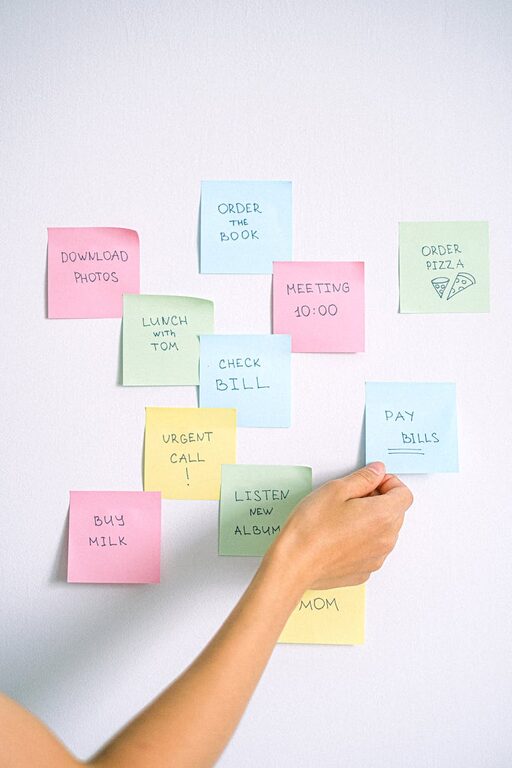Setting up a family command center is a practical way to keep your household running smoothly. It serves as a central spot for schedules, reminders, mail, and important information that everyone in the family can easily access. Whether you have kids heading to school, busy adults juggling work, or a home filled with activities, a family command center helps reduce chaos and keeps everyone on the same page.
In this post, we’ll walk you through the steps to create your own family command center and share tips on maintaining it effectively.
What Is a Family Command Center?
A family command center is a designated area in your home where all essential household information is organized and displayed. It usually includes a calendar, a place for mail or paperwork, notes, and sometimes a charging station or key holder. By centralizing these items, you minimize lost papers, forgotten appointments, and last-minute scrambles.
Choosing the Right Location
The first step in setting up your family command center is deciding where to place it. Here are some popular spots and what to consider:
– Kitchen: Often the heart of the home, the kitchen is a convenient place as family members frequently pass through.
– Entryway or Mudroom: A great location to grab keys, backpacks, and notes when leaving or entering the house.
– Home Office or Study Area: Ideal if your family spends time here for planning or homework.
– Hallway or Mudroom Wall: Utilize unused wall space without compromising functionality.
Whichever spot you pick, make sure it’s visible, accessible to all family members, and large enough to accommodate the organizers you plan to use.
Essential Elements of a Family Command Center
A well-rounded command center includes several components to manage different aspects of family life:
1. Calendar or Planner
This is the backbone of your command center. Use a large wall calendar, whiteboard, or chalkboard to note appointments, school events, sports games, and deadlines. Color-coding for each family member helps quickly identify who has what on any given day.
2. Message Center
Include a bulletin board, corkboard, or magnetic board to pin important notes, invitations, to-do lists, or reminders.
3. Mail Organizer
Designate a spot for incoming and outgoing mail, bills, permission slips, or other paperwork to prevent clutter from piling up elsewhere.
4. Key Hooks and Charging Station
Adding hooks or small baskets helps keep keys or sunglasses handy. A charging station for devices is useful for families on the go.
5. Supply Storage
Keep pens, markers, sticky notes, and scissors nearby in small containers or drawers.
6. Reminder Basket or Tray
This can collect items that need to be taken out, like library books, forms, or lunchboxes.
Steps to Set Up Your Family Command Center
Step 1: Assess Your Needs
Think about what information your family needs to see daily. Consider schedules, meal planning, chores, and important paperwork. This will help you decide what components to include.
Step 2: Gather Materials
You might want the following items:
– Wall calendar or monthly planner
– Whiteboard or chalkboard
– Bulletin board or corkboard
– Mail sorter or file trays
– Hooks for keys and backpacks
– Pencil holder or small containers
– Charging station or power strip
– Labels and color-coded markers
Step 3: Choose and Prepare the Space
Clear the chosen wall or counter space. If necessary, paint or add a backing board to coordinate with your home decor.
Step 4: Install and Organize
Mount or place your chosen organizers on the wall. Arrange them so everything is easy to see and reach, with the calendar as the center feature. Use labels if helpful.
Step 5: Customize for Your Family
Assign colors or symbols for each family member on the calendar. Create chore charts or meal planning boards if you want to expand functionality.
Step 6: Introduce the Command Center
Show your family how to use it. Make it a habit to update calendars and place mail or notes daily.
Tips for Maintaining Your Family Command Center
– Regular Updates: Set a weekly time to update the calendar and clear old papers.
– Involve Everyone: Encourage family members to check and use the center regularly.
– Keep It Simple: Avoid overcrowding the space — only include what’s truly necessary.
– Use Technology: Pair your physical command center with digital calendars or apps if preferred.
– Personalize: Add family photos, inspirational quotes, or artwork to make it inviting.
Benefits of a Family Command Center
– Improved Communication: Everyone knows the schedule and important information.
– Reduced Stress: Less scrambling to find papers, keys, or appointments.
– Better Time Management: Easily see busy days and plan accordingly.
– Encourages Responsibility: Kids can check their own schedules and chores.
Conclusion
Setting up a family command center is a simple yet powerful way to bring order and ease to your everyday family life. By creating a central hub for schedules, reminders, and household essentials, everyone stays informed and connected. With the right location, tools, and a little maintenance, your family command center will become an indispensable tool in keeping your household organized and running smoothly. Give it a try and enjoy the benefits of a more coordinated home!

